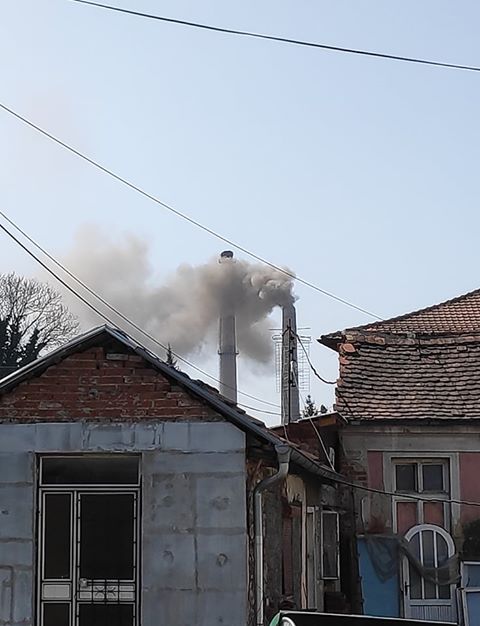
Author: Bojan Simišić, CEO @ Whale Shark Studio and EKO straža activist
It’s not exactly news that Serbia has succumbed to a large extent to pollution. Pollution was perhaps the main topic this winter. One of the things that helped spreading awarness is the report by the Global Alliance on Health and Pollution for 2019, which ranked Serbia first in pollution in Europe. The country came in ninth in the world.
It is positive news that awareness and care are strengthening, as is the presence of the issue and the pressure in the media. But the institutions have been pointing to the traffic as the main culprit, while experts and environmental activists disagreed with the state’s claim. Quite unexpectedly, the coronavirus ruled which side is right.
Ministry: Main pollution comes from traffic
The ecology ministry said several times that traffic is the most responsible for air pollution. The Serbian Environmental Protection Agency (SEPA), which operates within the Ministry of Environmental Protection, said in a report that the share of traffic in the pollution with notorious PM 2.5 particles is 6%. One could wonder why the ministry wouldn’t rely on reports of its own agency.
Coordinating panel relies on ministry’s stance – proposed measures are f0cused on traffic
The pollution season began in October and continued into the state of emergency, which was declared due to the COVID-19 epidemic. After several months of absence from the public eye, Minister of Environmental Protection Goran Trivan surfaced first under media pressure, followed by other officials. A new coordination group was formed, led by Speaker of the National Assembly Maja Gojković.

Heating plant in Kragujevac (Photo: EKO straža)
Even though the members of the coordinating body admitted (between the lines) who some of the proper polluters are, they directed all the planned measures to decrease the pollution from traffic and completely ignored 94% of other causes highlighted by SEPA.
We have more and more cars every year, so the Ministry of the Interior intends to control motor vehicles for exhaust gases more thoroughly, especially in regular annual testing.
The 2020 budget already envisages subsidies for the purchases of electric and hybrid cars and chargers are being installed in cities and on highways.
Belgrade prepared to allocate EUR 6.5 billion to tackle pollution emanating from traffic
Deputy Mayor Goran Vesić said in January that the City of Belgrade has a pompous EUR 6.5 billion for investment. Belgrade won’t buy any diesel-powered vehicles. It ordered 200 buses running on gas and municipal enterprises will switch to compressed natural gas and electric vehicles.
Vesić said drivers of electric cars will get free parking before the end of the year, Vesić asserted. He announced many more solutions, like walls of moss, a tunnel beneath Belgrade and the installation of no less than 245 meters. Each costs EUR 120,000, according to information we obtained.
Traffic is perceived as main culprit also at state level
Minister Trivan has insisted on the importance of banning imports of cars with Euro 3 engines, while Minister of Mining and Energy Aleksandar Antić said he was absolutely convinced the energy sector is dedicated mostly to the environment, even though it is contradictory to the report on the state of the environment.
Pollution levels during corona and minimal traffic

The state of emergency and the curfew, introduced due to the spread of COVID-19, decreased the movement of both pedestrians and cars. An unplanned experiment led to the conclusion about how much vehicles are responsible for the pollution in general.
I checked traffic cameras on the first day at 23:45 and there were only a few odd cars alongside police vehicles. But the air still stank.

The concentration of PM 2.5 particles in the air before and after the curfew
The results were still catastrophic. Readings showed purple or a hazardous air pollution level for several districts and it was at least orange everywhere else.

SEPA’s air quality measurements for Subotica
Points in Kraljevo, Lazarevac, Novi Pazar, Novi Sad’s Rumenačka unit, Pančevo and Šabac were all purple. The meter in Smederevu showed a a PM concentration of 171 miligrams per cubic meter in Smederevo. Subotica was the worst as the station there measured a disastrous 325 level of PM 2.5 or 32 times the average recommended by the World Health Organization.
Stop making it about Belgrade – all of Serbia is in danger
All the unfortunate factors aside, we can now prove what we have claimed from the start – automobiles have a minimum share in overall particle pollution. It reveals the money planned for this year would be wasted, as it wouldn’t lower the presence of PM 2.5 particles.
Since curfews started, households continued with heating and the district network started round-the-clock operations. The industry continued to work and thermal power plants kept making electricity. An open fire erupted on March 26 at the Vinča landfill, which we documented in a photo published on the EKO straža page.
The corona crisis will end, but pollution has been here for years and it won’t disappear on its own. Pollution kills about 10,000 people per year in Serbia. Can we allow spending no less than EUR 6.5 billion on something that won’t reduce pollution?
It is necessary to stop making this about Belgrade as the city is not the only one that’s polluted and it is not even at the biggest risk. This is a good wakeup call for us to start solving things the right way when the COVID-19 crisis ends.


















Be the first one to comment on this article.